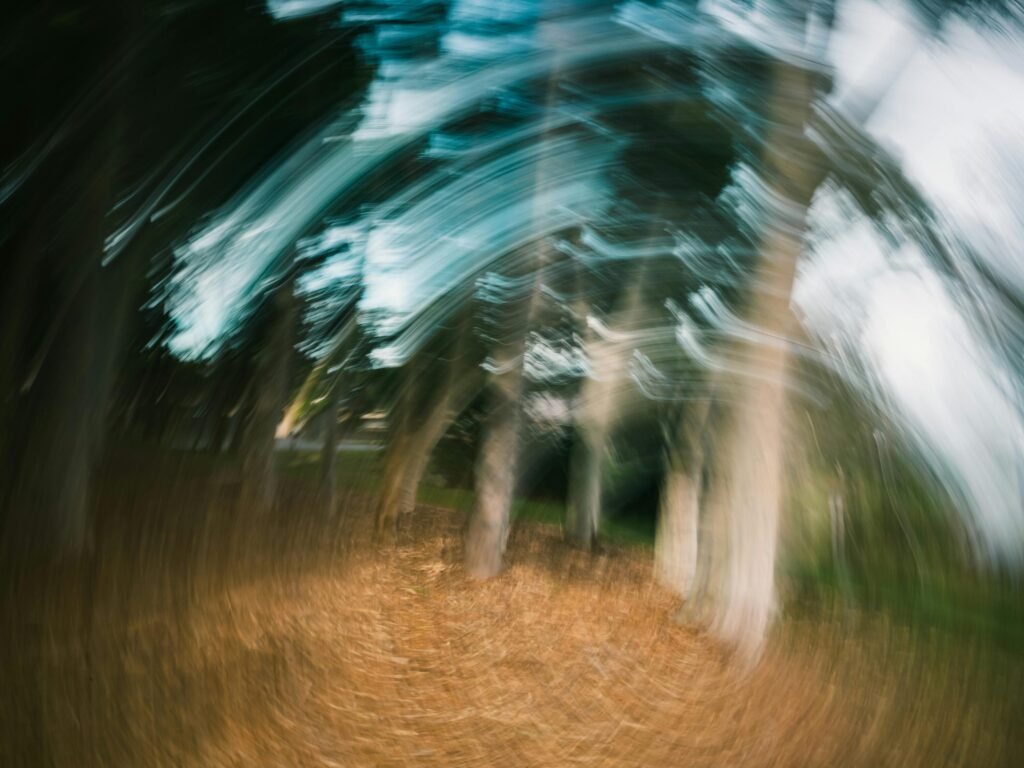Introduction
Vestibular migraine flare-ups are among the most debilitating experiences I face in my daily life. These episodes, which stem from my complex medical background—including severe secondary POTS from a PONS stroke caused by EDS, PPPD, polyplopia, tinnitus, and neuropathy—leave me spinning for days at a time (up to 10 days). This post is my attempt to document the reality of living through these flares, especially when they show up without warning and reshape my entire world in a matter of hours.
The Sudden Arrival of the Spin
There’s no warning. One moment I might be engaging with the day, and the next—it’s as if gravity slips sideways. The spinning sneaks up without ceremony, leaving me physically upright but neurologically detached. Vision stays as it is, and balance, too—but even then, the world feels unreachable. It’s not just difficult to interact with people or tasks—it’s impossible. At its peak, a flare can dominate for full days, during which I often wonder how anyone could continue living if this state were permanent.
Inside the Flare
Being stuck in bed while my head floats in a surreal orbit is terrifying. In those moments, I’m trapped with heavy thoughts. I make promises to eat more carefully, to avoid any deviation that might have provoked this latest spiral. But those promises form in a fog of fear, because truthfully, it’s impossible to fully predict when or why the spin starts.
Do you have workplace accommodations for your POTS?
I live alone, which doesn’t change the condition’s course—but amplifies the emotional toll. The isolation feels sharper when the spinning starts. Even knowing that someone else in the room couldn’t fix it, their presence might make this dark void feel less consuming.
Medication and Sensory Survival
I take meclizine when I have to. The dosage suggests three a day, but I stop at one—it’s just enough to dull the motion without burying me in its side effects. Despite the dampening, I still feel like a slow-moving zombie, my head drifting even as the rest of me stays still.
During episodes, I need silence and darkness. Any noise feels invasive, any flicker of light overwhelming. My survival setting becomes: lie down, breathe, and wait. I don’t journal during these times. It feels too mentally taxing. Reflection happens later, if at all.
Moving Through the Fog
Strangely, I still try to move—even when movement feels alien. I set a pole beside me, shuffle my legs, tilt my body gently. It’s not exercise in the usual sense; it’s a slow defiance against total stillness. During summer, I adjust the duration depending on garden activity—but typically keep at least 30 to 45 minutes of indoor movement, sometimes up to an hour and a half. Whether this prevents worsening symptoms or not, I commit to the routine.
Food Sensitivities and Suspicions
Cheese is the most consistent dietary culprit. Cow’s milk cheeses almost always bring trouble. Goat cheese, though? That one’s more mysterious. Sometimes I eat it without a problem, other times it seems to initiate a full vestibular migraine. Chocolate and nuts have caused issues only a handful of times.
Despite not having any confirmed allergies or intolerances, my body reacts in unpredictable ways. High-histamine foods like aged cheeses and dairy can sneak past my radar, making the tracking process that much harder. I don’t currently journal food intake in depth, but I’m becoming increasingly aware that dietary vigilance might be my best defense.
Tinnitus and the Floating Head
During a flare, tinnitus spikes. It joins the chaos, adding constant ringing to the swirling disorientation. My head feels detached—like it’s suspended just above my body, floating loosely without anchor. It’s disconcerting and exhausting, and every small sound pulses against the edges of my sensory capacity.
After the Storm
When the migraine finally lifts, the world returns in breathtaking clarity. I call these post-flare windows “second chances.” The relief is overwhelming, almost euphoric. Moving, thinking, even sipping coffee again feels like a celebration. I don’t typically journal about the flares afterward, but I think about them. The contrast between the spinning and the clarity is profound—and each recovery feels like a small personal miracle.
Final Thoughts
Vestibular migraine flare-ups, especially in the context of secondary POTS and a stroke history, are unlike anything I’ve experienced. They are haunting, disorienting, and sometimes emotionally devastating. But through symptom tracking, cautious diet adjustments, movement rituals, and sheer persistence, I continue building ways to cope. Each recovery, no matter how long it takes, reminds me that clarity returns—even when it feels impossible.
I hope this post resonates with others navigating similar invisible battles. Whether you’re dealing with spinning flares, sensory overload, or unpredictable food sensitivities, you’re not alone—and your resilience matters.




